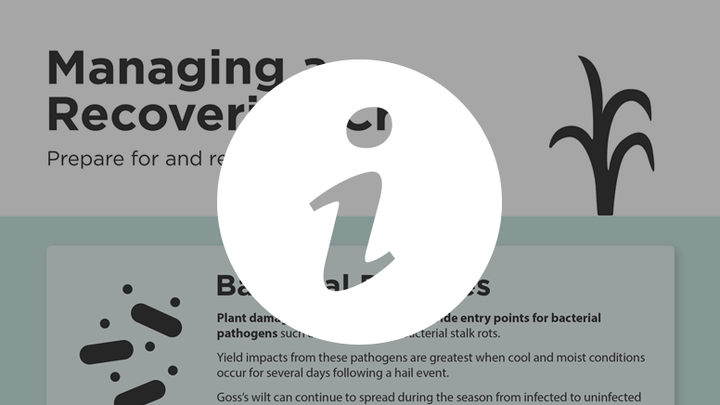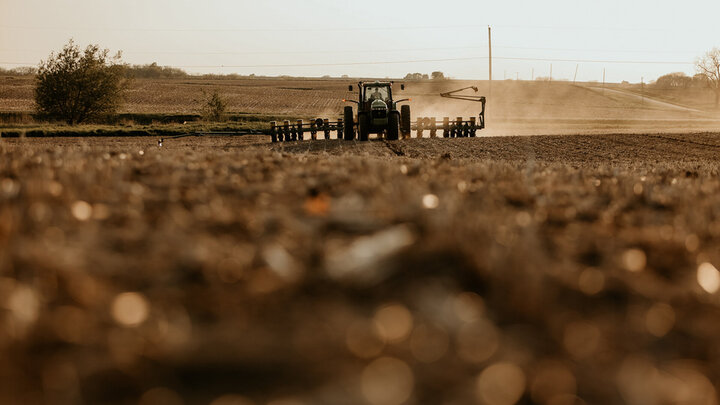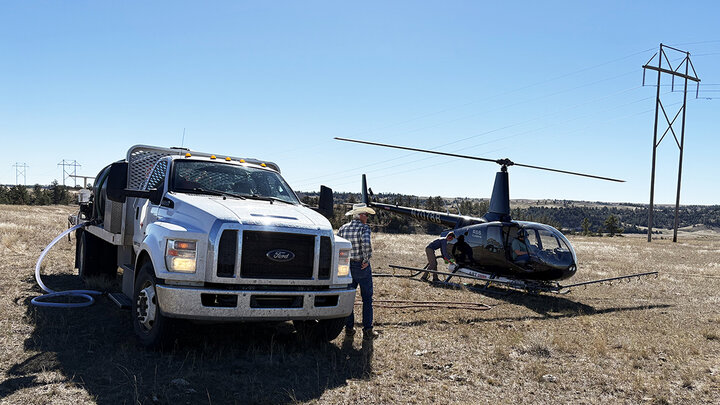
Managing Post-Hail Threats from Disease and Insects
Hail damage to plants can increase the likelihood of inoculation of some plant pathogens and infestation of some insect pests. These organisms can increase yield losses and, in some cases, make grain unmarketable.

Infographic: Managing a Recovering Crop
Hail can strike late enough in the growing season that replanting isn’t a feasible option. This infographic focuses on several considerations for managing a recovering crop.

Video: Managing a Recovering Crop
In addition to primary plant injury from hail, damage can occur later in the season from bacterial pathogens that enter plant wounds. This video addresses the potential for continued plant injury from bacterial disease and how best to manage harvest and grain storage. it also notes research showing that fungal pathogens do not cause additional injury post-hail.

Video: Weed Management Considerations Following Hail
Production loss estimates in corn from hail damage is a critical first step for determining the need to replant or to make adjustments on future inputs. Regardless of crop development stage, it is critical to wait 7-10 days to allow the crop to respond for proper evaluation. Production loss estimates by the Federal Crop Insurance Corporation in corn may include remaining plant stand, defoliation and direct losses from ear damage depending on the stage of development. Additional losses and quality issues can occur with fungal infections so continued scouting of hail damage fields is important. Be sure to contact your crop adjuster before making any management decisions on a hail damaged crop. Justin McMechan, University of Nebraska Crop Protection and Cropping System Specialist.

MEET THE TEAM

This project was funded by a USDA National Institute of Food & Agriculture Smith-Lever Special Needs Grant with matching funds from the University of Nebraska–Lincoln.







